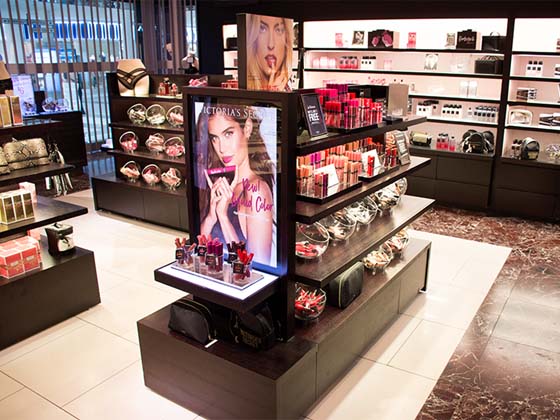Endcaps are point-of-purchase product displays that are placed at the end of aisles in retail stores and grocery stores. Due to their conspicuous placement, endcaps are prime real estate for visual merchandisers. Not only do they encourage impulse purchases, they set the tone for the entire aisle they’re attached to and temporarily influence buyer behavior as a result.
Typically, endcaps are assembled using colorful acrylic plastic or corrugated fiberboard. These materials allow the endcaps to be designed in a structurally sound and eye-catching way. Generally speaking, retailers lease these spaces to manufacturers, however it’s not uncommon for retailers to choose products to place on endcaps. After all, everyone stands to benefit from using endcaps – retailers can maximize their floorspace, manufacturers can market their products, and shoppers can enjoy a better browsing experience.

Let’s take a closer look at the motivations behind placing endcaps, and determine the best ways to design endcaps to encourage sales.
What are the Benefits of Endcaps?
Many brands believe that leveraging endcaps provides them with a competitive advantage. There are three primary reasons why retailers and manufacturers alike have reached this conclusion:
Increased Sales
Products on endcaps have been shown to sell at a better rate than products in aisles. This is because endcaps encourage impulse purchasing, especially if a product is low cost and low consideration. When a customer sees a product on an endcap, they’ll likely make a purchase without evaluating other items within the aisle. As a result, retailers often place items like candy, snacks, and seasonal items on endcaps.
[wbcr_snippet id=”1090″]
Better Visibility
As shoppers travel through a store, endcaps will almost certainly appear either directly in their field of vision, or along their peripherals. For this reason, manufacturers often pilot products in new markets through endcaps. If a product doesn’t sell well despite being featured on an endcap, it’s likely the product does not resonate well with the local audience. However, if a product does sell well, retailers and manufacturers can use this to justify long-term contracts for shelf space.
Brand Building
When featuring products on endcaps, consumers get a single, cohesive brand experience. So, brands should think of endcaps as small areas that are exclusively dedicated to promoting their brand. Be sure to use bold, eye-catching signage and imagery that aligns with you brand’s image. This way, even if a customer doesn’t purchase your product, they’ll internalize your brand’s image.
How to Visually Merchandise with Endcaps
Once a retailer or manufacturer understands the merits of endcaps as point-of-purchase displays, they can better understand how to design them for optimal success. Here are a few tips to keep in mind when designing endcaps to improve brand image and increase sales:
- Start Small – Keep in mind that endcaps create small “islands” for your brand and related product offerings. So, create this branded space to debut products, and use the subsequent sales data to determine if further promotional efforts are merited in the store.
- Consider Product Placement – When placing items on endcaps, remember to display products at a customer’s eye level to encourage more sales. Then, use the bottom of the display to store additional products for easy restocking. If a variety of products are being used on an endcap display, then place the biggest items on top of the display, and the smallest items towards the bottom.
- Use Retail Signage – Signage is often placed in two prominent locations: the topmost portion of the endcap, and on either side of the endcap. When designing retail signage for an endcap, ensure its as bold as possible while still aligning with your brand’s image. As well, ensure that the signage properly articulates your brand’s primary value proposition.
Key Takeaways
Endcaps are arguably one of the most important tools in a visual merchandiser’s toolbox. By nature, they display products in prominent locations – and with the right design, they can enhance your brand’s image and increase sales.
Looking to create effective displays that sell your product and your brand? Take a look at our retail displays and fixtures – or, if you’d like to learn more about creating custom endcap displays for your products, contact us today.

